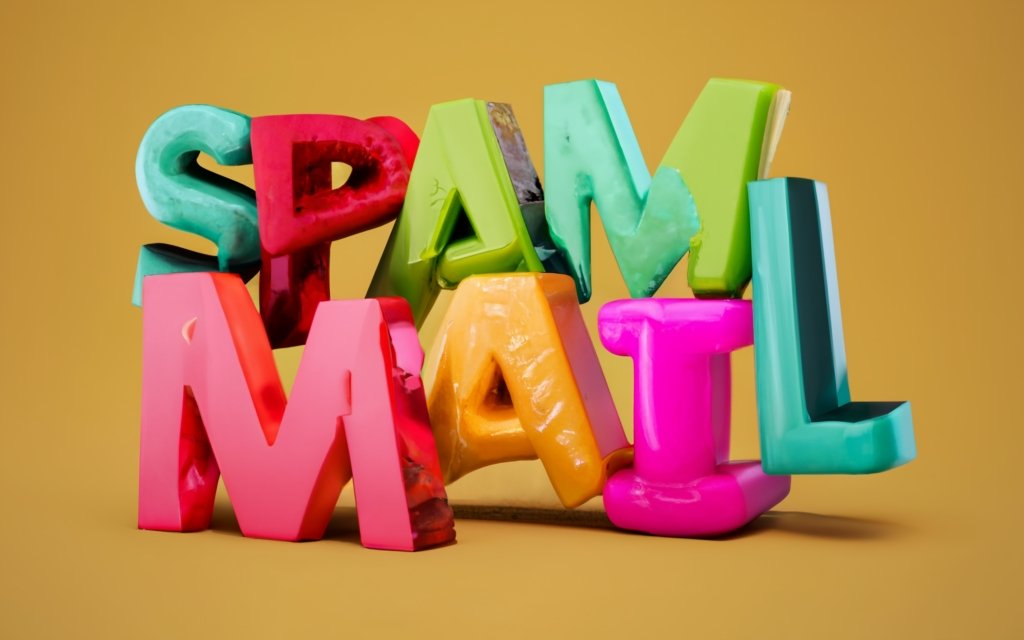Have you ever felt the cold sting of email rejection, staring sadly at a bounced message or the dreaded spam folder icon? Spam filters can be merciless, especially when faced with the elite skills of SpamAssassin – open source spam slayer extraordinaire.
But worry not fair sender! This complete guide will equip you with the knowledge to avoid SpamAssassin’s wrath. We’ll explore how it works, optimize those cryptic scores, and turn even the grumpiest filter into an inbox-delivering ally.
Say goodbye to spam misery and unleash your email potential!
What is SpamAssassin?
SpamAssassin is an open-source spam filtering system that was created by the Apache Software Foundation in 2001. Its purpose is to help identify and block unwanted spam emails to keep inboxes clean.
SpamAssassin works by analyzing emails and assigning a “spam score” between 1 and 10 to each message. The higher the score, the more likely the email is to be spam. The default threshold for blocking messages is a score of 5 or higher. Of course, server administrators can tweak SpamAssassin’s settings and thresholds as needed.

How SpamAssassin Assigns a Spam Score
When an email comes in, SpamAssassin runs it through a barrage of different tests and rules to determine the likelihood it is spam. There are over 500 tests that examine things like:
- The message headers
- The sending IP’s reputation
- If the sender is on any blocklists
- The contents of the email body
- Keyword matches and spammy phrases
- Link quality and destination
- Image ratios and embedded files
- Failed SPF or DKIM authentication
Each test that “fails” adds points to the score. If the total score meets or exceeds the set threshold, SpamAssassin labels it as spam.
SpamAssassin relies on advanced methodologies to catch tricky spam messages that try to disguise themselves as legitimate mail. This includes:
- Bayesian filtering – Statistical analysis that looks for spam probability based on word patterns.
- DNS blocklists – Checks sending IPs against databases of known spam senders.
- Collaborative filtering – Leverages global SpamAssassin user data to identify new spam tactics.
These complementary techniques enable SpamAssassin to be highly adaptable and stay ahead of most spam campaigns.
Why Every Email Gets a Spam Score
You might be wondering why all incoming email goes through SpamAssassin analysis. Shouldn’t regular emails from trusted sources be exempt?
The reason every single message gets evaluated is that spam tactics are constantly evolving. Even reputable senders can inadvertently trigger higher spam scores if they don’t follow best practices or if their own systems are compromised.
By analyzing all traffic, SpamAssassin detects any anomalous score increases that could indicate legitimate email turning spammy. Server admins can then proactively investigate the reason behind any scoring changes.
How to Leverage Your SpamAssassin Results
For marketers and email senders, it’s important to monitor your SpamAssassin scores even if you aren’t using it directly on your servers. Most major email providers and networks rely on SpamAssassin or similar filters.
When you send a campaign, any spam filter hits will degrade your sender reputation and placement in subscriber inboxes. It pays to be proactive by testing your emails’ spam scores before sending.
Tools like ZeroBounce and Mailtrap run SpamAssassin analysis on your test emails. They parse the results into an easy-to-understand format so you can pinpoint problem areas and optimize your campaigns for deliverability.
Keeping tabs on your SpamAssassin scores enables you to course-correct issues before they cause deliverability headaches or mistakenly classify your legitimate emails as spam.

How Does the SpamAssassin Scoring System Work?
Now that you know what SpamAssassin is, let’s look under the hood at how it analyzes emails and calculates those all-important spam scores.
The SpamAssassin Test Header
Every email processed by SpamAssassin will have an additional header added to the message header. This is where SpamAssassin reports its findings.
Here’s an example of what a SpamAssassin header looks like:
X-Spam-Checker-Version: SpamAssassin 3.4.2 (2018-09-13) on ip-10-186-0-85
X-Spam-Level: *
X-Spam-Status: No, score=1.1 required=5.0 tests=DKIM_SIGNED,DKIM_VALID,DKIM_VALID_AU,
HTML_MESSAGE,RCVD_IN_DNSWL_BLOCKED,SPF_PASS,T_DKIM_INVALID autolearn=ham autolearn_force=no version=3.4.2
X-Spam-Report:
* 0.0 DKIM_SIGNED Message has a DKIM or DK signature, not necessarily valid
* -0.1 DKIM_VALID Message has at least one valid DKIM or DK signature
* -0.1 DKIM_VALID_AU Message has a valid DKIM or DK signature from author's domain
* 0.0 HTML_MESSAGE BODY: HTML included in message
* 0.1 RCVD_IN_DNSWL_BLOCKED RBL: Sender listed at http://www.dnswl.org/, low trust [209.85.128.0 listed in list.dnswl.org]
* -0.0 SPF_PASS SPF: sender matches SPF record
* 0.5 T_DKIM_INVALID DKIM-Signature header exists but is not validLet’s break down what each section means:
- X-Spam-Checker-Version – The SpamAssassin version and server it ran on. Good to know in case results change between versions.
- X-Spam-Level – An quick summary of the score, shown in asterisks (one * per point).
- X-Spam-Status – The overall spam ruling. “Yes” if it passed the score threshold, “No” if not. Includes the numeric score and configured threshold.
- X-Spam-Report – The list of all tests run and each of their scores. This is the key info to focus on.
So in this example, the email received a 1.1 score, below the 5.0 spam threshold. The tests detect some good things like DKIM and SPF authentication. But the message also triggered a blocklist hit that raised the overall score.
Understanding SpamAssassin Test Results
The X-Spam-Report results list will typically contain a mix of positive and negative scores:
- Negative scores make an email less spammy. Having more of these lowers your overall number.
- Positive scores push the email closer to being spam. Too many will exceed the threshold.
- A score of 0 means the test had no real impact in either direction.
Here are some common tests you might encounter and what they indicate:
- HTML_IMAGE_RATIO_02 (0.8) – Low text to image ratio
- RCVD_IN_MSPIKE_H3 (+3.6) – Poor IP reputation
- MONEY_FORM (1.3) – References to monetary amounts
- FORGED_MUA_OUTLOOK (1.2) – Faked Outlook headers
- FREEMAIL_FROM (0.0) – Sender uses free email account
- AWL (-0.3) -Sender IP on allow list
Seeing which specific tests are triggering is the best way to optimize your campaigns and lower your spam score.
How Tests Are Weighted and Scored
Each test SpamAssassin runs has an associated score value. These values reflect the likelihood that a particular email characteristic is an indicator of spam.
- Tests known to be highly correlated with spam have higher positive scores. Failing these makes the biggest impact.
- Tests with lower or negative scores typically signify legitimate email practices.
The weighting system allows SpamAssassin to fine tune and prioritize detections based on how strongly they imply an email is spammy or not.
All the test scores are added together to generate the final 1 to 10 spam rating. The lower your total score, the better, with 0-2 being a good target range.
Understanding how your emails are scoring on the various SpamAssassin tests is key to improving your spam filtering results.

What’s Considered a Good SpamAssassin Score?
So your test results are in from SpamAssassin. But what score should you be aiming for to confidently avoid spam filters?
The Thresholds and Defaults
The default threshold in SpamAssassin for labeling an email as spam is 5.0. Any message that scores 5.0 or above gets flagged or filtered out.
This threshold of 5.0 is the standard that comes out of the box with SpamAssassin. However, administrators can choose to set custom thresholds for their implementations.
For example, a server admin could configure SpamAssassin to be more aggressive and start filtering at 3.5 instead of the default 5.0. Or they might set it at 6.0 or higher if they wanted to reduce the chance of false positives.
Each recipient server you send to may have different customizations in place. The only way to know their exact thresholds is to ask or do testing to determine what scores get flagged.
Aim As Low As Possible
Given you can’t control or predict customized server settings, the general guidance is:
Aim to get your SpamAssassin scores as low as realistically possible.
Even if you’re under the common 5.0 threshold, your email could still easily be blocked on platforms with more restrictive filtering.
Ideally, you want to be hitting a range of 0-2 to confidently avoid spam folders across providers. The closer you are to 0, the better.
If your campaigns are consistently scoring 3+ or higher in SpamAssassin tests, it’s worth investigating ways to further optimize and lower your ratings.
The Significance of Negative Scores
When viewing SpamAssassin results, you might notice some tests have negative scores rather than positive.
For example:
-1.0 ALL_TRUSTED Passed through trusted hosts only via SMTPUnlike positive scores that push the email towards being flagged as spam, negative scores improve your rating by making the email seem more legitimate.
The best possible score is negative, as that means the most certainty that the message is not spam.
In practice though, negative scores are difficult to achieve without being an established sender who is actively trusted or on allowlists. Some common ways are:
- Having the recipient server whitelist your IP address or domain.
- Passing DKIM/DMARC authentication from a trusted domain.
- Having previous good sender history from your IP.
As a sender, your goal should be to get your score as close to zero as possible through proper email practices. Any negative points are just a bonus.

How to Analyze and Improve Your SpamAssassin Score
Getting less-than-ideal SpamAssassin results? Don’t panic. The great thing about understanding your score is you can now take targeted steps to optimize it.
Learning from Your SpamAssassin Results
The key is to diagnose which specific tests you failed that led to the higher score. This info is contained in the X-Spam-Report header.
Go through each test and ask yourself:
- Why did this test in particular flag my email as spammy?
- What could I change or improve to avoid triggering that test in the future?
For example, if you see:
2.3 HTML_IMAGE_ONLY_08 Image only message, HTML part image larger than 8kbThen you know having large images without any text caused problems. You can address this by adding some descriptive text and reducing image sizes.
Other common fixes include:
- Removing blocked links or files.
- Increasing the text to image ratio.
- Rewriting content without spammy phrases.
- Properly configuring SPF/DKIM authentication.
- Switching to a reputable sending IP.
Take the time to research and understand each test you fail. This ensures you walk away knowing exactly how to optimize for next time.
Using Tools to Check Your SpamAssassin Score
Reading through raw SpamAssassin headers can be confusing and time consuming. This is where dedicated email testing tools come in handy.
Services like Mailtrap and MailerCheck integrate SpamAssassin analysis into their email tests.
Simply send your email to the provided test address. Their systems will run your message through SpamAssassin and other major spam filters, then display the results in an easy-to-understand format.
For example, MailerCheck condenses your SpamAssassin results into a simple table:
These deliverability tools eliminate the manual work of deciphering raw headers. Their spam check reports summarize which tests you passed or failed, along with guidance on improving your score.
Leveraging email testing tools takes the guesswork out of interpreting your SpamAssassin results. They provide clear insights for troubleshooting and optimizing your campaigns to achieve lower scores and better inbox placement.

Tips for Keeping Your SpamAssassin Score Low
Now that you understand how SpamAssassin works, let’s go over some proven tips to keep your scores as low as possible.
Follow Email Best Practices
Engaging in overall best practices for professional email sending goes a long way towards avoiding spam traps.
Proper authentication – Set up SPF, DKIM, and DMARC records for your sending domain. This verifies you as a legitimate sender.
List hygiene – Only send to active, engaged subscribers who regularly open your emails. Prune stale contacts.
Compliance – Honor unsubscribe requests immediately. Provide working unsubscribe links in each email.
Following email deliverability best practices builds your reputation as a trusted sender and keeps your spam scores down.
Choose Reputable Sending Tools
The tools and systems you use to send email campaigns can influence your spam rating.
Shared IPs – Sending from a shared IP through an ESP is better than trying to maintain deliverability solo from your own IP. Shared IPs have an established history that helps reputation.
Good sender history – Similarly, only use email service providers and tools with strong deliverability track records. Avoid shady offshore bulk sending services.
Selecting reputable tools goes a long way towards enhancing your own sender credibility by association.
Monitor and Avoid Blocklists
If your own IP address or domain ends up on a spam blocklist, your emails will take an instant deliverability hit.
Blocklist inclusion can add points to your SpamAssassin score or even lead to automatic blocking regardless of your score.
Regularly check blocklist aggregation sites to confirm your IP and domains are not listed. If they are, follow best practices to get removed.
Staying off spam blocklists protects your email from issues beyond just SpamAssassin filtering.
Write Normal, Non-Spammy Content
Believe it or not, SpamAssassin analyzes the content of your email body for natural language patterns.
Emails with excess ALL CAPS, repetitive punctuation, strange spelllllings, and odd word patterns tend to score higher as spam.
Also avoid commonly spammed subjects like money, pharmaceuticals, or promotions. Use normal grammar and topics relevant to your list segments.
Writing emails conversationally – as you would to a friend – will keep your content spam score low. Just be authentic!
Don’t Hide Anything
Transparency is key for deliverability. When analyzing headers, SpamAssassin wants to see:
- Accurate “From” names matching the domain
- Real reply-to addresses
- Properly identified mailing list names
- Correct time zones and dates
Trying to hide or alter standard header information will make you appear suspicious. Keep all visible email details honest and above board.
Take It Slow When Ramping Up Volume
If you go from sending 100 emails a month to suddenly blasting 50,000, spam filters will see that as abnormal behavior.
Their assumption is that spammers operate this way – quietly building up troves of email lists before mass spamming everyone.
Even if these are legitimate subscribers, drastic sending increases can hurt your score. Ramp up gradually over weeks and months as you grow your list to look more natural.
A steady and consistent volume pattern reassures SpamAssassin that you’re a valid sender.

Implementing and Configuring SpamAssassin
For administrators installing SpamAssassin, proper configuration is important to achieve a good balance of accurate spam detection while minimizing false positives.
Setting the Spam Threshold
As mentioned earlier, the out-of-the-box threshold for classifying emails as spam is a score of 5.0.
For many use cases, it’s smart to keep the default 5.0 threshold when first implementing SpamAssassin. Monitor the results over the initial weeks to gauge the filtering accuracy.
If you find a lot of obvious spam getting through, consider tightening down the threshold to 4.0 or 4.5.
On the flip side, if you see many legitimate emails being flagged as spam, try increasing the threshold to 5.5 or higher.
Tuning the threshold takes some trial and error to arrive at the sweet spot for your environment. Check flagged emails and tweak the level until you achieve satisfactory results.
Reviewing Flagged Emails
Speaking of checking flagged emails, when possible you’ll want to review messages that exceed the spam threshold to catch any false positives.
Early on, legitimate mail being caught as spam is fairly common while the filter learns good sender patterns. By manually correcting misclassified emails and marking them as “ham”, you can train SpamAssassin to improve its accuracy over time.
As the system matures and the Bayesian database builds up, the number of false positives will steadily decrease. But it’s still smart to periodically check the spam folder for any obvious good emails to reverse the filtering on.
Advanced Usage and Custom Rules
Once comfortable with the basics, SpamAssassin offers many advanced configuration options:
- Add custom body and header rules tailored to your needs.
- Prioritize certain rules by increasing their score impact.
- Whitelist or blacklist IP ranges, domains, or addresses.
- Integrate external blacklists and RBLs.
- Enable periodic automatic training to keep Bayesian filtering updated.
The SpamAssassin community also offers many third-party rulesets to incorporate additional detections.
While the default settings work great for most, you can customize SpamAssassin scoring to fit your unique requirements. Just be sure to test tweaks carefully and conservatively.
The Bottom Line
Spam filtering serves an important purpose, but can also cause headaches for legitimate email senders and marketers. SpamAssassin aims to strike a balance, but isn’t perfect.
SpamAssassin provides critical protection against unwanted spam messages. Its multiple layers of analysis do an excellent job identifying and blocking the majority of junk mail.
However, overly spammy emails are not the only ones at risk of being flagged. As discussed in this guide, even if you follow best practices, your important emails can sometimes get caught in the spam filter.
The reasons are many – a technical glitch, a subtle content issue, a recipient’s aggressive custom settings. With so many factors and tests, there’s always potential for the occasional false positive.
This is why monitoring your SpamAssassin score is so valuable. By regularly testing your campaigns before sending, you can catch any deliverability red flags early.
Seeing the specific SpamAssassin rules you trigger makes it easy to optimize your emails accordingly. This prevents your messages from being mistakenly marked as spam.
While not flawless, SpamAssassin provides a vital shield against malicious emails. But staying on top of your scores helps ensure your legitimate mailing efforts don’t become collateral damage.
With some diligence, you can confidently deliver your messages to recipient inboxes and avoid accidentally being labeled an assassin yourself!

Key Takeaways
- SpamAssassin is an open-source spam filtering system that assigns a 1-10 spam score to emails. Lower is better.
- The default spam threshold is 5.0, but can be customized by administrators. Aim for the lowest score realistically possible.
- Failing SpamAssassin tests adds points, while passing earns negative scores. Review your results to see which tests are triggering.
- Shared IPs, proper authentication, gradual volume increases, and avoiding blocklists help improve your score.
- Use email testing tools to automatically check your SpamAssassin rating before sending campaigns.
- Occasional false positives are expected. Monitor flagged emails and optimize based on failed tests.
- Keeping your score low ensures deliverability while still allowing SpamAssassin to catch actual spam.
Frequently Asked Questions
Q: What is the default SpamAssassin threshold?
A: The default threshold is 5.0. Emails that score 5.0 or higher are considered spam.
Q: How can I view my SpamAssassin test results?
A: SpamAssassin adds a detailed header with the individual test scores. Use a service like Mailtrap or MailerCheck to easily check your rating.
Q: What’s the best SpamAssassin score to aim for?
A: Get your score as low as possible, ideally between 0-2. Even under 5.0 may get flagged on some servers.
Q: Should I be concerned about a 3.5 score?
A: Yes, that’s dangerously close to the spam threshold. Identify the failing tests and make optimizations.
Q: How can negative scores happen?
A: Passing stringent authentication checks or being on recipient allowlists can lead to rare negative scores.
Q: Does a negative score guarantee inbox delivery?
A: Not 100%, but it means the email is almost certainly not spam. Other factors beyond SpamAssassin also come into play.
Q: If my IP is on a blocklist, will all mail be blocked?
A: Maybe. Some blocklists auto-reject, while others just influence SpamAssassin scoring. Get off lists ASAP.
Q: How often should I check my score?
A: Test and monitor results at least once per major campaign send. Continually optimizing your score improves deliverability.
Q: Can I set up custom SpamAssassin rules and filters?
A: Yes, SpamAssassin is highly customizable in terms of added rules, scores, and configurations. But use caution.

